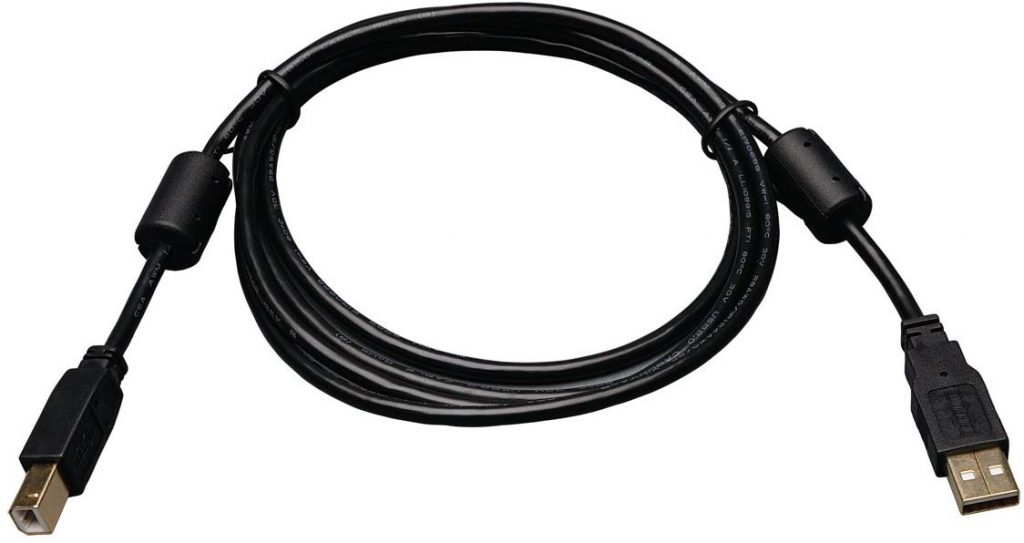I found this tip from Lorne Waters on the SDRplay Facebook page:
I was having a lot of trouble with local noise and not getting really good signal spikes. Well I took a chance after reading many articles on using better USB cables. The picture below is what I purchased from amazon. It’s a USB with dual ferrite cores mounted at each end. Well this did wonders for me. It’s like less than 10 bucks. Well worth it. Try it for yourself. Using with SDRplay RSP1a.
Click here to view on Amazon.com (affiliate link supports the SWLing Post).
Lorne has a good point. All of my SDR USB cables have at least one in-line ferrite choke. Cables with dual chokes like the Tripp Lite are pretty rare. Note that this USB cable fits SDRs (like SDRplay models) with a USB-B port. I’ve had a difficult time in the past finding dual ferrite choke USB-A to Mini or Micro USB ports. In those cases, I often employ these inexpensive snap-on ferrite chokes.


Without Uno even booted up, I get low level audio static through my computer-connected audio system when the USB cable is plugged into my RSPdx. When I listen to normally clean sounding audio sources on the same desktop computer (Windows 10) I get static with the cable plugged in; no static when the cable is NOT plugged in.
I have filter chokes on the cable. The USB cable is plugged directly into the back panel of the computer. I initially used a powered hub, but that did not allow the dx to operate properly (glitched).
I do not know the brand of the cable I have. I wonder if any DIFFERENT, higher quality cable would make a difference. From 0 to 100%, what are the chances a higher quality USB cable would clear up my audio static?
Or is there some other cause of the audio static I should look for?
You can find more useful usb cables.
It is not so important where you shield the receiver input. But you need to do it!
Ferrite rings like those used on USB cables are not so good on lower frequencies (shortwave and below) as their inductivities are quite limited. At least they are better than those 2-part units you can attach to cables as those have an air gap. It is obvious that these yokes have only 1 “winding”.
The alternative is a common-mode yoke on the RF cable: Use a thin cable like RG-174/U and wind it several times through a larger ferrite ring. The inductivity goes with the square of the winding number! But many windings mean more capacity between the windings which reduces die reactance above 100 MHz or so.
If you wish to use the wide frequency range of these devices, so both!
I was disgusted with the USB noise I got in the HF+ SDR from Airspy. However, someone on a mailing list recommended the Blitzwolf USB cables from Banggood. It actually cleaned up a lot of the noise that I had.
And, in fact, it outperformed the cable that the HF+ was shipped with, even with the ferrites and all that wonderful stuff. .
Chokes are fine, but then one may check how “clean” the USB signals are ( and they’re usually DIRTY) and also consider that modern computers and monitors generate a LOT of RFI, so it would be a good idea using a quite long USB cable and chokes PLUS feeding power to whatever device through a separate power suppy (be that a battery or whatever); the power coming from a computer USB port is definitely DIRTY, so a separate power source would be a good idea, then … don’t just believe me, check it yourself
Add the conputer generated RF noise, the RF pickup from USB cables and you’ll see the whole picture … and also see how to fix these issues 🙂
I use this exact cable for running FT8 on my Icom 7300. Besides the chokes, it’s shielded. Using a cheap cable would mess up my USB connection because it would flood with RF on transmit. These work great.